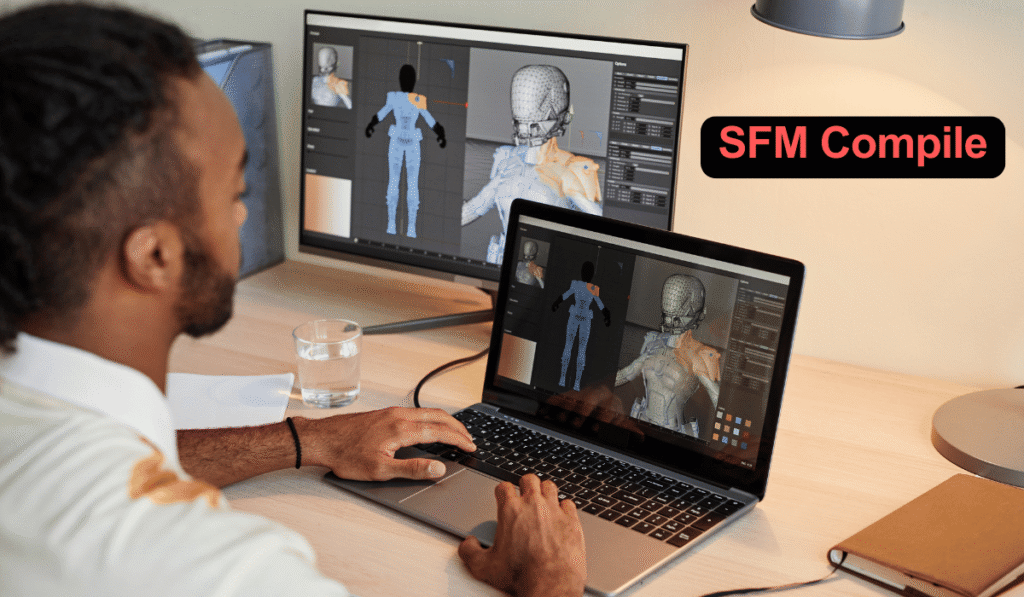Introduction to SFM (Source Filmmaker)
Source Filmmaker, or SFM for short, has emerged as a powerful tool for filmmakers and animators alike. It allows users to breathe life into their creative visions using the rich universe of Valve’s games. Whether you’re crafting an epic story arc or simply experimenting with animation techniques, mastering SFM can open new doors in your artistic journey. One crucial aspect that often trips up newcomers is the process of compiling their work. Understanding how to effectively compile your projects can be the difference between a polished final product and frustrating setbacks. Let’s dive deeper into what SFM Compile means and why it matters in your filmmaking endeavors.
What is SFM Compile?
SFM Compile refers to the process of turning your Source Filmmaker project into a final video format. It involves rendering all your scenes, animations, and effects into a cohesive product.
When you compile in SFM, you’re essentially preparing your hard work for sharing with others. This means converting complex data from the software into something viewable on different platforms.
During this phase, various elements come together: models, textures, lighting—everything you’ve meticulously crafted is processed. The outcome can be a stunning animation that showcases creativity and technical skill.
Compiling also allows users to optimize settings like resolution and frame rates. These adjustments ensure that the final output meets the desired quality without compromising performance during playback.
Why Is It Important?
Compiling in SFM is crucial for transforming your raw footage into a polished final product. It’s the bridge between concept and execution.
When you compile, you harness all the elements of your project—animations, sound effects, and visuals. This process ensures everything syncs perfectly. A well-executed compile can elevate your work from amateur to professional quality.
Moreover, compiling helps identify issues early on. By reviewing the compiled version, you catch errors that may have slipped through during editing. Fixing these problems at this stage saves time later in production.
Efficiency is another key aspect of compiling. The more streamlined your process becomes, the quicker you can produce high-quality content.
In a competitive environment like animation and filmmaking, mastering compilation sets you apart from others striving for similar goals.
The Process of Compiling in SFM
Compiling in Source Filmmaker (SFM) is a crucial step that transforms your project into a playable format. The process begins once you finish setting up your scenes, animations, and audio.
First, ensure all assets are correctly linked. Missing files can lead to frustrating errors during compilation. Once everything is in place, navigate to the compile options available in SFM’s interface.
Select the desired output settings based on your needs. You might want high quality for final renders or lower settings for drafts. Pay attention to frame rates and resolution—they affect both performance and visual fidelity.
After configuring these options, click on “Compile.” This action prompts SFM to work its magic as it processes all elements of your project together effectively. Depending on complexity, this may take some time; patience is essential here!
Tips and Tricks for Optimizing Your Compiles
To optimize your SFM compile process, start by organizing your assets. Keep models, textures, and animations neatly categorized. This will save time during the compiling phase.
Next, reduce unnecessary elements in your scene. Too many props or characters can slow down compilation significantly. Focus on what truly adds value to your project.
Use lower-resolution textures for previews. High-res textures are great for final renders but can cause delays when you’re just testing ideas.
Adjust settings within SFM itself as well. Experiment with different compile options to find the best balance between quality and speed that suits your needs.
Remember to keep your software updated. Newer versions often come with performance improvements that could enhance compiles dramatically without extra effort on your part.
Common Errors and How to Fix Them
Compiling in SFM can sometimes lead to frustrating errors. One common issue is the “missing assets” error. This usually means that some models or textures haven’t been correctly referenced. To resolve this, double-check your file paths and ensure all required assets are properly imported.
Another frequent problem is low memory warnings during the compile process. When this happens, try closing unnecessary applications to free up RAM or adjust your project settings for lower quality outputs temporarily.
You might encounter a crash due to large scene complexity as well. Simplifying scenes by removing non-essential elements can help mitigate this issue.
If you see an “unknown error” message, consider reviewing the console logs for hints on what went wrong. They often provide valuable insights into fixing specific problems within your project setup. Keeping these tips handy will make troubleshooting smoother and more efficient.
Conclusion
When working with Source Filmmaker (SFM), the compile process is a crucial step that can make or break your project. Understanding what SFM compile is and how to optimize it will enhance your experience and improve the quality of your animations.
By following best practices during compilation, you can avoid common pitfalls and errors that may hinder your workflow. Remember, patience pays off—especially when dealing with complex scenes or heavy assets. With practice, you’ll find yourself mastering the art of compiling in SFM.
Embrace the learning curve and continue experimenting; each project will teach you something new about this powerful filmmaking tool. Happy animating!


